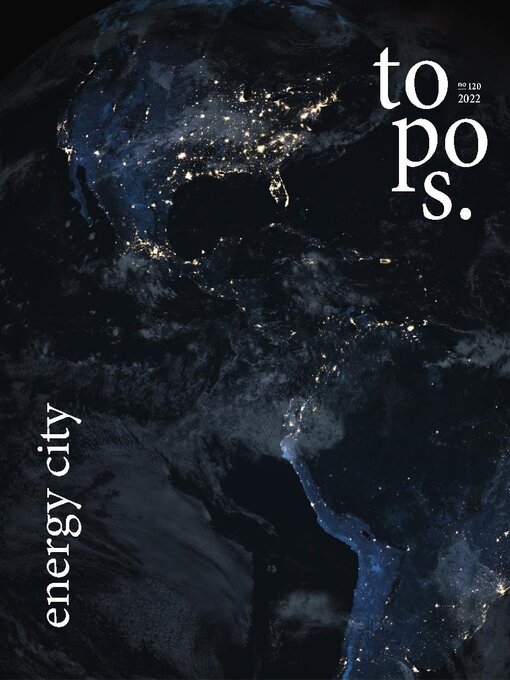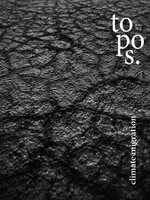Topos is a must-have for successful landscape architects, planners, urban designers and architects all over the world.The monothematic issues provide a global overview of innovative projects, new developments and trends in the profession. Be part of the worldwide community of Topos readers!
THE INTERNATIONAL REVIEW OF LANDSCAPE ARCHITECTURE AND URBAN DESIGN
Editor's note
Solkan Hydropower Plant • Harnessing the power of water has a long tradition. Hydropower is valued as a renewable energy source. At the same time, there is no shortage of criticism. The encroachment into the environment and water bodies through the construction of large-scale power plants and reservoirs has a negative impact on biodiversity, destroys natural flowing waters and habitats for humans and animals. But do hydropower plants even have a future in times of climate change? Most hydropower plants are run-of-river plants and use the kinetic energy of water. This is done by allowing water to flow through turbines and transfer the kinetic energy to a generator, which eventually converts the energy into electricity. However, if the required water is not available, hydropower plants cannot reliably fulfill their purpose. And this situation will increasingly occur according to a recent WWF study based on the WWF Water Risk Filter. According to the study, by 2050, 61 percent of the world’s hydropower plants will be located in regions where there is a high to extremely high risk of flooding and or water scarcity due to the climate crisis. The latter was the case at the Solkan hydropower plant in Slovenia at the end of July. Due to the extremely low water level of the Soca River, operations were at a standstill - for the first time since 2003. The average flow was so low that it did not allow safe operation of the turbines. Emptying the associated reservoirs was equally unjustifiable, critical levels were reached and fish kills were feared. In the end, it was the rain that filled the riverbed again and allowed the hydroelectric power plant to be put into operation after one week. The turbines of the hydroelectric power plant first started generating energy in 1984. One used the gradient of 20 meters between the hydroelectric power plant Plave and the Italian state border. With a water flow rate through the turbines of 180 cubic meters per second, the power plant has a design capacity of 32 MWe.
“FROM BURNING RAINFORESTS, THE UNIVERSE AND TIME THAT HAS ALREADY FLED – H2 MUST FIX IT!” • No element occurs more frequently in our universe than good old hydrogen. It was never really written off as a source of energy, but in the course of the electric mobility revolution it fell behind. But that should be the end of it.
Vancouver • Vancouver is a melting pot of cultures and aims to achieve an urban energy transition to 100 percent renewable energy by 2050.
Circunomics
ENERGY INFRASTRUCTURE
Energy and the City • It is one of the great challenges of the 21st century and nothing less is at stake than the habitability of our planet. If we do not figure out how to make our energy supply sustainable quickly, climate collapse will be the consequence.
History of Household Electricity • Almost 130 years ago, the first private households in Germany were connected to the power grid. But it took more than half a century before it was used for more than just making light.
energy city • Among other things, the Englishman James Prescott Joule (1818-1889) formulated the first law of thermodynamics and is also the namesake of the unit of energy in the International System of Units.
REYKJAVIK: 100% ENERGY EFFICIENT
SALVATION ON MARS?
What would a heat-proof city look like?
E = MC2
POWERING NEIGHBOURHOODS IN AUSTRALIA
CITIES BY NIGHT
Politics in Architecture
TRIAL RUN FOR THE CITY OF...

 N. 132
N. 132
 N. 131
N. 131
 N. 130
N. 130
 N. 129
N. 129
 N. 128
N. 128
 N. 127
N. 127
 N. 126
N. 126
 N. 125
N. 125
 N. 124
N. 124
 N. 123
N. 123
 N. 122
N. 122
 N. 121
N. 121